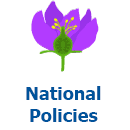 Every country has developed, formulated, and decreed national policies related to rural advisory services. Find some examples here. If you are looking for a national policy from a specific country, please use the search function, selecting the category “National policies” and the tag for the country.
Every country has developed, formulated, and decreed national policies related to rural advisory services. Find some examples here. If you are looking for a national policy from a specific country, please use the search function, selecting the category “National policies” and the tag for the country.
Adapting Agriculture Platforms for Nutrition: A Case Study of a Participatory, Video-Based Agricultural Extension Platform in India
Successful integration of nutrition interventions into large-scale development programmes from nutrition-relevant sectors, such as agriculture, can address critical underlying determinants of undernutrition and enhance the coverage and effectiveness of on-going nutritionspecific activities. However, evidence on how this can be done is limited. This study examines the feasibility of delivering maternal, infant, and young child nutrition behaviour change communication through an innovative agricultural extension programme serving nutritionally vulnerable groups in rural India. The existing agriculture programme involves participatory production of low-cost videos promoting best practices and broad dissemination through village-level women's self-help groups. For the nutrition intervention, 10 videos promoting specific maternal, infant, and young child nutrition practices were produced and disseminated in 30 villages.
Fostering Agriculture - Nutrition Links
Malnutrition continues to be a major development challenge in the South Asia Region. Given its size, India hosts the majority of the malnourished. Around 300 million people in India do not have access to a food supply that sufficiently meets their basic energy needs (World Bank 2012. Nutrition at A Glance: India. Washington, DC: World Bank Group). Despite recent economic growth, poverty remains high, and malnutrition is now manifest in all its forms with overweight and obesity increasing alongside persistent undernutrition and micronutrient deficiencies. The progress made between 1970 and 2010 in reducing malnutrition was largely due to improving access to safe water, female education, and female empowerment, the latter 2 especially key in South Asia. The factor that made the least progress between 1995 and 2010 is increasing quantity and quality of food, clearly a responsibility of agriculture (L. Smith and L. Haddad 2014, “Reducing Child Undernutrition: Past Drivers and Priorities for the Post-MDG Era.” IDS Working Paper 441).
Improved Nutrition Through Agricultural Extension and Advisory Services
Case Studies of Curriculum Review and Operational Lessons From India
Even after several decades of green revolution, malnutrition continues to be a major development challenge in much of South Asia, and India has a major share of the malnourished people in the region. The nutritional issues in India are complex and therefore require a multifaceted, multidisciplinary solution. One facet of the solution is increasing knowledge about the causes of and solutions to malnutrition at the farm household level through agricultural extension. Disseminating nutrition-sensitive agricultural knowledge is not currently an activity of agricultural extension in India, but there is great potential for integrating it through the well-established network of extension offi cers. For nutrition goals to be integrated into extension, the curricula provided to current and future agricultural extension agents must be revisited. As part of the South Asia Food and Nutrition Security Initiative (SAFANSI), this paper focuses on approaches to incorporating such nutrition content into the agricultural extension curriculum.
Three state agricultural universities in Tamil Nadu, united Andhra Pradesh, and Bihar were used as case studies for the curriculum review. Through these case studies, face-to-face consultations at the national level down to program implementation at the village level have been developed. These include consultative workshops, and a conceptual framework and strategy for incorporating nutrition into extension curriculum development to improve nutrition outcomes. This strategy, detailed in this report, includes opportunities for collaboration from the national level to the community level. Specifi c lessons and follow-up actions are outlined that may be useful for other South Asian countries.

